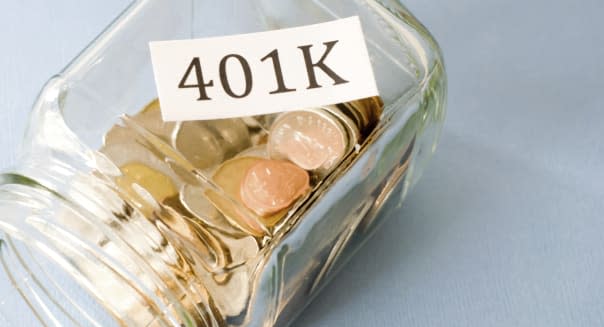7 Things I Wish People Knew About 401(k) Plans

By Dana Anspach
Do you have a 401(k) plan? If so, read on. Here are seven things I wish people knew about their 401(k) plans:
1. You can roll it over when you leave. When you leave your employer, you can transfer your 401(k) plan to an individual retirement account, and it is not a taxable event. This type of transfer is called a rollover. Many 401(k) participants think any type of distribution from their 401(k) plan is taxable and subject to penalties. That isn't true.
All plans allow rollovers to an established IRA account. Usually, the check is made payable to the new financial institution as the custodian, with an "for benefit of," or FBO, to you. If you have a few 401(k) plans from former employers, I advise consolidating them into one IRA account. That will make it far easier to handle address and beneficiary changes, manage investments and track distributions once you are retired.
2. Automated portfolios work. Most 401(k) plans today offer either a fund choice or an online interactive tool that will make the investment decisions for you. These types of automated portfolios are great choices. If it is a single fund, it may have a retirement year in the name of the fund, such as "Target Date 2030." In that case, pick the fund that corresponds with the approximate year you think you may retire. A single fund like this is a complete diversified investment that automatically allocates your money across many asset classes.
%VIRTUAL-WSSCourseInline-723%If it is an online tool, take the time to walk through the steps, and it should pick the portfolio for you. This type of system often results in something like "conservative," "moderate" or "moderately aggressive" as a result. Using such a tool delivers a complete, professionally designed portfolio.
These automated portfolios make far better choices than the random way many participants pick investments, which often seems more akin to "eeny meeny miny moe."
3. Stable value funds are a good choice. As you get closer to retirement, you'll want some of your retirement money in a safe investment option. Stable value funds, which are offered within many 401(k) plans, are a good choice. Today they are paying higher interest rates than bank savings. They won't fluctuate like stock funds, and unlike bond funds, they shouldn't go down in value if interest rates rise.
How much should you keep in such a safe choice? It depends on how close you are to retirement and how much you'll need to withdraw. For example, if you are retiring in two years and know you'll need to withdraw $20,000 a year once retired, consider moving at least your first two to three years of future withdrawals into a safe investment option. In this example, that would be $40,000 to $60,000.
4. Age 55 is special. Most people think that if they take a withdrawal from a 401(k) plan before age 59½, a 10 percent early withdrawal penalty tax will apply. This isn't always true for 401(k) plans. There is a special provision in 401(k) plans for people who leave their employer after they reach age 55 but before they reach age 59½. This rule allows you to take withdrawals that are exempt from the penalty tax without having to use the substantially equal payment provision.
Beware of someone who suggests you roll funds from a 401(k) to an IRA without first explaining the age 55 provision to you. Once you move funds from your 401(k) to your IRA, the age 55 penalty-free withdrawal provision no longer applies, and you'll have to wait until age 59½.
5. You have creditor protection. Your 401(k) plans are creditor-protected by law. This is why it can be foolish to use 401(k) money to avoid foreclosure, pay off debt or start a business. In the case of future bankruptcy, your 401(k) money is a protected asset. Don't touch your 401(k) money except for retirement.
6. Designated Roth accounts are great. More and more 401(k) plans are offering the ability to make Roth contributions. In a 401(k) plan, this is called a designated Roth account. Such contributions, unlike regular 401(k) contributions, are not tax-deductible, but they grow tax-free, and in retirement, your withdrawals will be tax-free.
There are many people who would be better off making Roth contributions, but they don't consider it because they assume they are better off getting a deduction today. This is not always true. Check to see if your plan offers a Roth option, and if so, talk to your certified public accountant, tax preparer or other financial adviser to see which choice they think would be best for you.
7. Company stock may have special tax treatment. If your 401(k) plan has an employee stock ownership plan within it, and you own a lot of company stock, a special tax rule may apply to you. This tax rule is referred to as net unrealized appreciation. At retirement, it enables you to distribute company stock and only pay ordinary income tax on the cost basis of the stock. Then, as you sell the stock off, you can typically pay tax on the gain at the capital gains tax rate, which is lower than the ordinary income tax rate.
If this tax rule applies to you, that doesn't automatically mean it will be to your benefit. But you should at least run an analysis to see if it would save you money. I've seen cases where using the net unrealized appreciation tax rules saved tens of thousands of dollars, and other cases where it offered no meaningful benefit. You won't know unless you look.
Updated on July 9, 2015: This article was originally published May 19, 2014. It has been updated.
